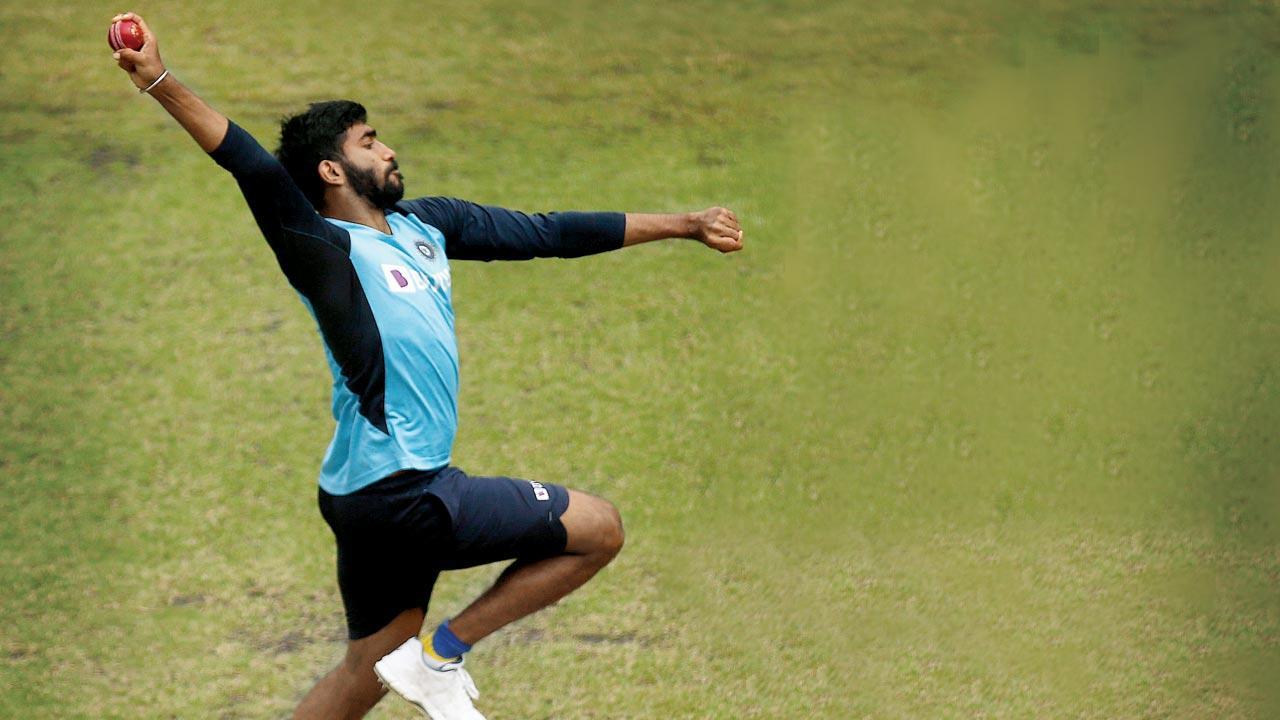Modern pacers do a lot of varied training in order to prepare for demanding schedules but injuries continue to pile up. Fast bowlers in the past concentrated more on running and bowling in nets to gain match fitness

India pace ace Jasprit Bumrah bowls in the nets at the MCG last December. Pic/Getty Images
The modern cricketer is substantially better rewarded than players of the previous century. However, like all the better things in life there is a downside involved.
ADVERTISEMENT
This comes in the form of the numerous adjustments to be made because of the extra formats that are now played and the resultant crowding of the schedule.
As if that wasn’t a big enough challenge, there are now the extra vagaries caused by the pandemic. There’s no better example than the chaos created by the postponement of the opulent Indian Premier League, resulting in a last-minute appeal to re-jig India’s tour dates in England to accommodate the completion of the tournament.
Whoever said life wasn’t meant to be easy, perfectly summed up the career of the modern international cricketer. The COVID-ravaged world has meant cricketers spend extended periods in bubbles which not only challenges their skills but also their mental health. It has also resulted in scheduling that has Test matches crammed together which is physically and mentally demanding, especially for the fast bowlers.
Whereas the 20th century cricketer had the occasional back-to-back Test over the Boxing Day—the New Year period—this is now a common occurrence. And in recent times, it’s more likely the schedule will include back-to-back Test matches, which is a real grind for all concerned.
This was highlighted in the last Australia-India series where the home side used the same pace bowling trio in all four Tests. As the Australian pace bowlers wore down in the final stages of the series, their Indian counterparts may have caught a break as injuries meant they had to constantly change personnel.
India spoilt for choices
India are one of the few teams who have enough skilled pace men in reserve to meet those challenges and still remain competitive.
The modern fast bowlers do a lot of varied training in order to prepare for the demanding schedule but still the injuries continue to pile up.
Fast bowlers in the past concentrated more on running and bowling a lot in the nets to gain their match fitness. Australian fast bowler Frank Misson, who toured England in 1961, was one who believed in running to build up stamina.
The 1961 Australian team travelled by boat but Misson was not to be denied his training regime. As he was running laps of the deck some of the less physically-minded players were sitting in the bar when they saw Misson flash past the window.
Perhaps embarrassed by Misson’s zealous workouts, they decided to complicate his exercise regime by placing deck chairs in his path. When Misson hurdled the first set of obstacles and did the same to yet another layer of chairs, the bar rats relented and left the fast bowler to train in peace.
The preparation a player goes through today in the build-up to a Test is extensive when compared to the past. Teams now arrive at the venue anywhere up to four days prior to the game which is a far cry from what happened in 1921 when England was in disarray following their involvement in a brutal war.
Haphazard and bizarre
The selections ranged from the haphazard to the bizarre, with 10 England players who appeared in that series only being involved in a solitary Ashes Test. However, Lord Tennyson’s build-up to the Lord’s Test was extraordinary by any measure.
Relaxing at his club in London at 1 on the morning of the game, smoking a cigar and imbibing, Tennyson received a phone call requesting him to report to Lord’s later that day to take part in the match. Not surprisingly, he failed in the first innings—like the bulk of his teammates—but atoned in the second innings by remaining 74 not out.
It would be interesting to discover if retired cricketers envied the rewards paid their modern equivalent or whether the current players would swap today’s whirling merry-go-round for the casual approach of the past. I suspect most international cricketers are just happy to have played.
 Subscribe today by clicking the link and stay updated with the latest news!" Click here!
Subscribe today by clicking the link and stay updated with the latest news!" Click here!






